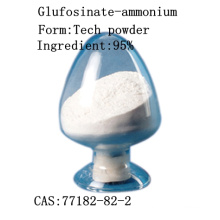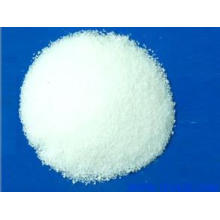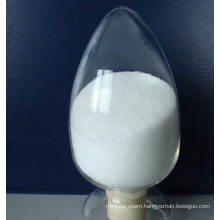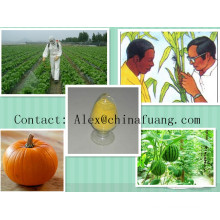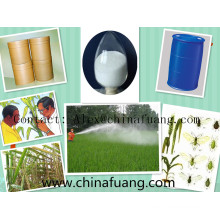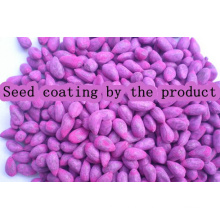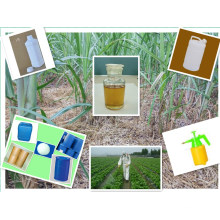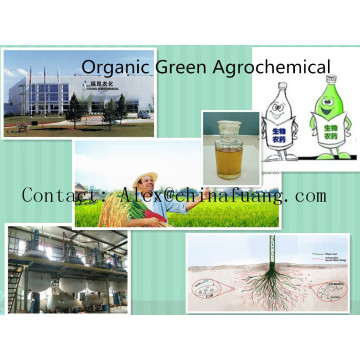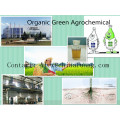Agricultural Plant Chemicals Agrochemical Bactericide Germicide Fungicide 60207-90-1 Propiconazole
Product Description
Appearance: Powder Toxicity of High and Low: Highly Toxic and High Toxic Drugs Toxicological Effect: Physical Agents Apply Crops: Most Plant Cabbage, Cotton, Rice, Maize, Citrus Specification: 10g/ small bag and vary HS Code: 2930909051 Source: Inorganic & Mineral Mode: Stomach Agent Formulating Vary: 95%Tc, 12.5%Sc, 25% Sc, 80% Wdg Trademark: Fuang Origin: China Propiconazole IUPAC: (2RS,4RS;2RS,4SR)-1-[2-(2,4-dichlorophenyl)-4-propyl-1,3-dioxolan-2-ylmethyl]-1H-1,2,4-triazole 1-[[2-(2,4-dichlorophenyl)-4-propyl-1,3-dioxolan-2-yl]methyl]-1H-1,2,4-triazole CAS No. 60207-90-1 Molecular Formula :C15H17Cl2N3O2 Category: Fungicides > Triazole fungicides Premix Chlorothalonil+cyproconazole+propiconazole
Chlorothalonil+fludioxonil+propiconazole
Chlorothalonil+propiconazole
Azoxystrobin+propiconazole
Trifloxystrobin+propiconazole
Fenpropidin+propiconazole
trifloxystrobin+propiconazole+prothioconazole
Difenoconazole+Propiconazole
Emulsifiable concentrate, seed treatment, wettable powder.
Premix Parters: cyfluthrin piperonyl butoxide tetramethrin; disulfoton; Physical Properties Molecular weight:342.2; Physical form:Yellowish, odourless, viscous liquid ( tech.). Density:1.29 (20 °C); Vapour pressure:2.7 ×10-2 mPa (20 °C); 5.6 ×10-2 mPa (25 °C); Henry constant:9.2 × 10-5 Pa m3 mol-1 (20 °C, calc.); Partition coefficient(n-octanol and water):logP = 3.72 ( pH 6.6, 25 °C); pKa:1.09, v. weak base; Solubility:In water 100 mg/l (20 °C). In n-hexane 47 g/l. Completely miscible with ethanol, acetone, toluene and n-octanol (25 °C).; Stability:Stable up to 320 °C; no significant hydrolysis. Toxicology Oral:Acute oral LD50 for rats 1517, mice 1490 mg/ kg. Percutaneous:Acute percutaneous LD50 for rats >4000, rabbits >6000 mg/kg. Non-irritating to skin and eyes (rabbits). No sensitisation (guinea pigs). Inhalation:LC50 (4 h) for rats >5800 mg/m3. ADI:( JMPR) No ADI[1992]. Environmental Profile Ecotoxicology:
Algae: EC50 0.02-13.6 mg/l for three freshwater algae and two diatom species.Bees:Not toxic to bees; LD50 (contact and oral) >100µg/bee.Birds:Acute oral LD50 for Japanese quail 2223, bobwhite quail 2825, mallard ducks >2510, Pekin ducks >6000 mg/kg. LC50 (8 d) for Japanese quail >1000, bobwhite quail >5620, mallard ducks >Daphnia: EC50 4.8 mg/l.Fish: LC50 (96 h) for carp 6.8, rainbow trout 5.3, golden orfe 5.1, spot 2.6 mg/l.Worms:No toxic effects against Lumbricus rebellus.Other aquatic spp.: LC50 (96 h) for crayfish 42 mg/l. EC50 (96 h) for mysid shrimp (Mysidopsis bahia) 0.5 mg/l.Other beneficial spp.:Under field conditions, not expected to have any significant impact.
Environmental fate:
Animals:After oral administration to the rat, propiconazole is rapidly absorbed and also rapidly and almost completely eliminated with urine and faeces. Residues in tissues were generally low and there was no evidence for accumulation or retention of propiconazolSoil: DT50 in aerobic soils (25 °C) 40-70 d. The main degradation pathways are hydroxylation of the propyl side-chain and the dioxolane ring, and finally formation of 1,2,4-triazole. Koc (ads) 950 ml/g, immobile in soil.Plant:Degradation proceeds through hydroxylation of the n-propyl side-chain and deketalisation of the dioxolan ring. After cleavage of triazole, triazole-alanine is formed as the main metabolite. Metabolites are conjugated mostly as glucosides. Transport Information Signal Word:CAUTION; Hazard Class:II(Moderately hazardous)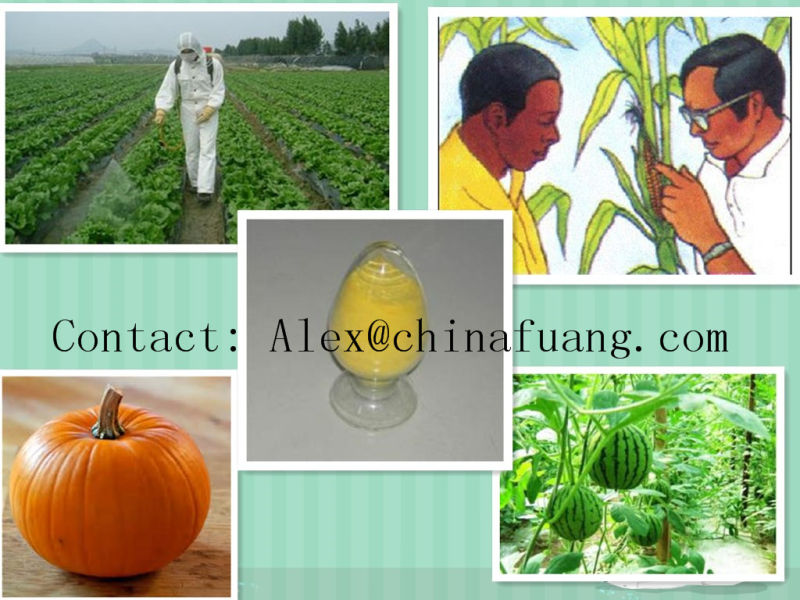 CropUse: vines, potatoes, tomatoes, tobacco, vegetables
CropUse: vines, potatoes, tomatoes, tobacco, vegetables
Premix Chlorothalonil+dimethomorph
Dimethomorph+mancozeb
Pyraclostrobin+dimethomorph
Dimethomorph+ametoctradin
Fluazinam+dimethomorph
Azoxystrobin+Dimethomorph
Propineb+Dimethomorph
Dimethomorph+Metalaxyl
Dispersible concentrate, suspension concentrate, wettable powder. Premix Parters: tetradifon. Toxicology Oral:Acute oral LD50 for male rats 4300 mg/kg, female rats 3500 mg/kg, male mice >5000 mg/kg, female mice 3700 mg/kg b.w. Percutaneous:Acute percutaneous LD50 for rats >5000 mg/kg b.w. Not irritant to skin or eyes of rabbits. Not a skin sensitiser (guinea pigs). Inhalation: LC50 (4 h) for rats >4.2 mg/l air. ADI:() 0.002 mg/kg b.w. (sum of dimethoate and omethoate Environmental Profile Ecotoxicology:?
Algae: EC50 (96 h) >20 mg/l.Bees:Non-toxic to honeybees at 0.1 mg/bee (contact or oral, highest dose tested).Birds:Acute oral LD50 for mallard ducks >2000 mg/kg. Dietary LC50 >5300 ppm.Daphnia: EC50 (48 h) 49 mg/l.Fish: LC50 (96 h) for bluegill sunfish >25, carp 14, rainbow trout 3.4 mg/l.Worms: EC50 for earthworms >1000 mg/kg soil.?
Environmental fate:
Animals:In rats, the major route of metabolism is demethylation of one of the dimethoxy groups or by oxidation of one of the CH2groups (ortho- or meta- position) of the morpholine ring. The major route of excretion was the faeces.Soil:Moderately mobile ( Kd2.09-11.67 ml/g, Koc 290-566). Aerobic soil metabolism 50 66-117 d; no degradates identified except for CO2.Plant:The only significant component of the residue, when present, is the parent compound.
WATER SOLUBILITY: 18 mg/l at 20°C (pH 7).
Fate in soil:
The half-life of dimethomorph is 14-50 days. The compound has low soil mobility and is not expected to leach. Fate in aquatic systems:
Dimethomorph is slowly degraded by photolysis in water. Transport Information Signal Word:CAUTION; Hazard Class:III (Slightly hazardous)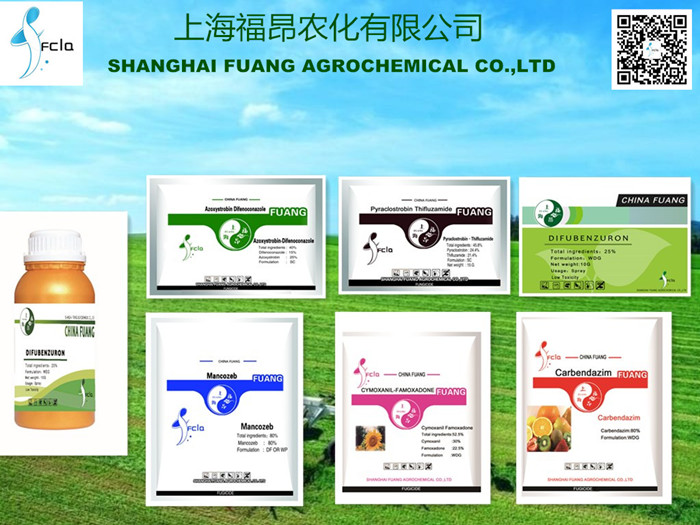
About us:
Shanghai Fuang Agrochemical Co., Ltd. was established in 2005, is the manufacturer of plant protection chemicals. Domestically, we are approved by China Agriculture ministry, Ministry of Industry & information is ranked as "AAA-credit" enterprise by Shandong province. Internationally, we're certified by SGS, ISO9001, ISO14001 and OHSAS18001.
We have 2 factories in 2 cities, covers 35 hectares, with 500 employees, annual productivity 2,000 tons Pesticide technical (TC) and 500,000 tons formulation agrochemicals, as a 20 top Insecticide producer in China.
During 10 years, we established global strategic alliance and international cooperative relationships, gained technical growing in advanced synthesis and production technologies, complex formulation design, OEM, quality control and customer services, as well as we're improving worldwide distribution channels, especially in South Asia, Latin America, Eastern Europe and Africa. Contact info:
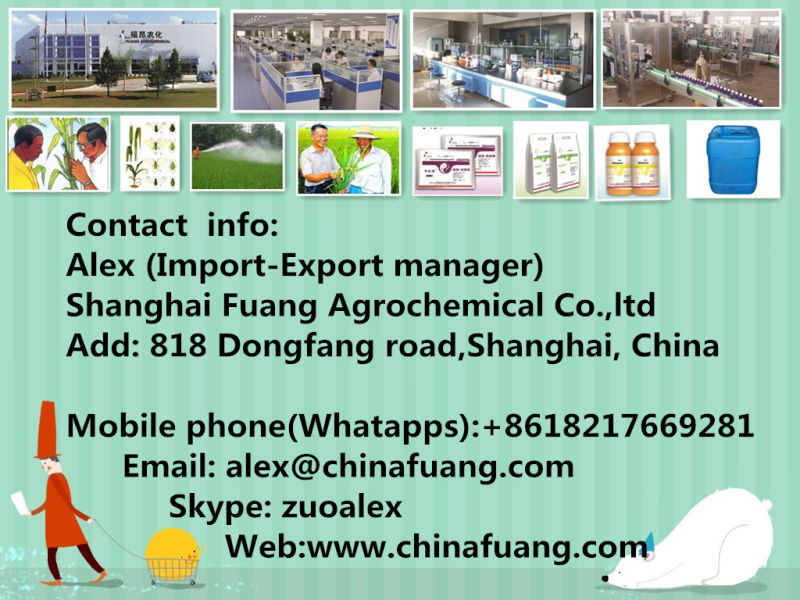
Contact us if you need more details on Propiconazole. We are ready to answer your questions on packaging, logistics, certification or any other aspects about Fungicide、Bactericide. If these products fail to match your need, please contact us and we would like to provide relevant information.
Chlorothalonil+fludioxonil+propiconazole
Chlorothalonil+propiconazole
Azoxystrobin+propiconazole
Trifloxystrobin+propiconazole
Fenpropidin+propiconazole
trifloxystrobin+propiconazole+prothioconazole
Difenoconazole+Propiconazole
Emulsifiable concentrate, seed treatment, wettable powder.
Premix Parters: cyfluthrin piperonyl butoxide tetramethrin; disulfoton; Physical Properties Molecular weight:342.2; Physical form:Yellowish, odourless, viscous liquid ( tech.). Density:1.29 (20 °C); Vapour pressure:2.7 ×10-2 mPa (20 °C); 5.6 ×10-2 mPa (25 °C); Henry constant:9.2 × 10-5 Pa m3 mol-1 (20 °C, calc.); Partition coefficient(n-octanol and water):logP = 3.72 ( pH 6.6, 25 °C); pKa:1.09, v. weak base; Solubility:In water 100 mg/l (20 °C). In n-hexane 47 g/l. Completely miscible with ethanol, acetone, toluene and n-octanol (25 °C).; Stability:Stable up to 320 °C; no significant hydrolysis. Toxicology Oral:Acute oral LD50 for rats 1517, mice 1490 mg/ kg. Percutaneous:Acute percutaneous LD50 for rats >4000, rabbits >6000 mg/kg. Non-irritating to skin and eyes (rabbits). No sensitisation (guinea pigs). Inhalation:LC50 (4 h) for rats >5800 mg/m3. ADI:( JMPR) No ADI[1992]. Environmental Profile Ecotoxicology:
Algae: EC50 0.02-13.6 mg/l for three freshwater algae and two diatom species.Bees:Not toxic to bees; LD50 (contact and oral) >100µg/bee.Birds:Acute oral LD50 for Japanese quail 2223, bobwhite quail 2825, mallard ducks >2510, Pekin ducks >6000 mg/kg. LC50 (8 d) for Japanese quail >1000, bobwhite quail >5620, mallard ducks >Daphnia: EC50 4.8 mg/l.Fish: LC50 (96 h) for carp 6.8, rainbow trout 5.3, golden orfe 5.1, spot 2.6 mg/l.Worms:No toxic effects against Lumbricus rebellus.Other aquatic spp.: LC50 (96 h) for crayfish 42 mg/l. EC50 (96 h) for mysid shrimp (Mysidopsis bahia) 0.5 mg/l.Other beneficial spp.:Under field conditions, not expected to have any significant impact.
Environmental fate:
Animals:After oral administration to the rat, propiconazole is rapidly absorbed and also rapidly and almost completely eliminated with urine and faeces. Residues in tissues were generally low and there was no evidence for accumulation or retention of propiconazolSoil: DT50 in aerobic soils (25 °C) 40-70 d. The main degradation pathways are hydroxylation of the propyl side-chain and the dioxolane ring, and finally formation of 1,2,4-triazole. Koc (ads) 950 ml/g, immobile in soil.Plant:Degradation proceeds through hydroxylation of the n-propyl side-chain and deketalisation of the dioxolan ring. After cleavage of triazole, triazole-alanine is formed as the main metabolite. Metabolites are conjugated mostly as glucosides. Transport Information Signal Word:CAUTION; Hazard Class:II(Moderately hazardous)
 CropUse: vines, potatoes, tomatoes, tobacco, vegetables
CropUse: vines, potatoes, tomatoes, tobacco, vegetables Vines | 300 g ai/ha |
Dimethomorph+mancozeb
Pyraclostrobin+dimethomorph
Dimethomorph+ametoctradin
Fluazinam+dimethomorph
Azoxystrobin+Dimethomorph
Propineb+Dimethomorph
Dimethomorph+Metalaxyl
Type | contain % |
Wettable powder (WP) | 50% (w/w) |
Wettable powder (WP) | 25% (w/w) |
Dispersible concentrate (DC) | 15% (w/v) |
Algae: EC50 (96 h) >20 mg/l.Bees:Non-toxic to honeybees at 0.1 mg/bee (contact or oral, highest dose tested).Birds:Acute oral LD50 for mallard ducks >2000 mg/kg. Dietary LC50 >5300 ppm.Daphnia: EC50 (48 h) 49 mg/l.Fish: LC50 (96 h) for bluegill sunfish >25, carp 14, rainbow trout 3.4 mg/l.Worms: EC50 for earthworms >1000 mg/kg soil.?
Environmental fate:
Animals:In rats, the major route of metabolism is demethylation of one of the dimethoxy groups or by oxidation of one of the CH2groups (ortho- or meta- position) of the morpholine ring. The major route of excretion was the faeces.Soil:Moderately mobile ( Kd2.09-11.67 ml/g, Koc 290-566). Aerobic soil metabolism 50 66-117 d; no degradates identified except for CO2.Plant:The only significant component of the residue, when present, is the parent compound.
WATER SOLUBILITY: 18 mg/l at 20°C (pH 7).
Mallard duck | LD50 >2,000 mg/kg |
Bluegill sunfish [96 hrs] | LC50>25 mg/litre |
Bobwhite quail | LD50 >2,000 mg/kg |
Rainbow trout [96 hrs] | LC506.8 mg/litre |
Carp [96 hrs] | LC50 18 mg/litre |
The half-life of dimethomorph is 14-50 days. The compound has low soil mobility and is not expected to leach. Fate in aquatic systems:
Dimethomorph is slowly degraded by photolysis in water. Transport Information Signal Word:CAUTION; Hazard Class:III (Slightly hazardous)

About us:
Shanghai Fuang Agrochemical Co., Ltd. was established in 2005, is the manufacturer of plant protection chemicals. Domestically, we are approved by China Agriculture ministry, Ministry of Industry & information is ranked as "AAA-credit" enterprise by Shandong province. Internationally, we're certified by SGS, ISO9001, ISO14001 and OHSAS18001.
We have 2 factories in 2 cities, covers 35 hectares, with 500 employees, annual productivity 2,000 tons Pesticide technical (TC) and 500,000 tons formulation agrochemicals, as a 20 top Insecticide producer in China.
During 10 years, we established global strategic alliance and international cooperative relationships, gained technical growing in advanced synthesis and production technologies, complex formulation design, OEM, quality control and customer services, as well as we're improving worldwide distribution channels, especially in South Asia, Latin America, Eastern Europe and Africa. Contact info:

Contact us if you need more details on Propiconazole. We are ready to answer your questions on packaging, logistics, certification or any other aspects about Fungicide、Bactericide. If these products fail to match your need, please contact us and we would like to provide relevant information.
Product Categories : Fungicides Series > Other Fungicides
Other Products
Hot Products
High quality Agrochemical/Herbicide Imazamox 96%TC 4%SL CAS 114311-32-9Zineb 90% TC 65%WP 80%WPFungicide Mancozeb 85%TC,80%WP,70%WP,50%WPcarbendazim 98%TC,60%WP,50%WP,50%SCDifenoconazole 250g/L ECClethodim 24% select for Beanacetamiprid 20%SLdimethoate 85%TCbenomyl 200G/L ECpendimethalin 33%ECWeed killer/herbicide Pretilachlor 96%tc,600g/L EC,51218-49-6 -lqSupply pesticide insecticide imidacloprid 95% TC, 35%SC -lqparaquat 20%SLEmamectin benzoate 5.0% WDGDiazinon 60% EC Insecticide,diazinon 95%tc,cas:2921-88-2-lqagrochemical insecticide abamectin 1.8% EC ointment
